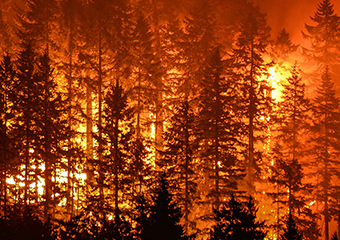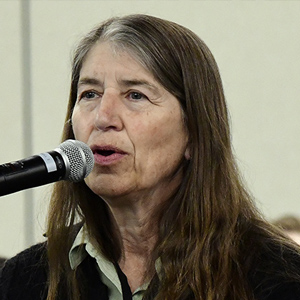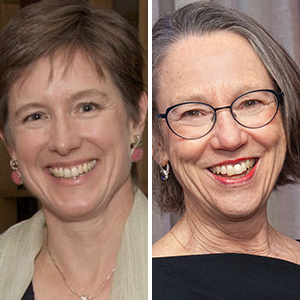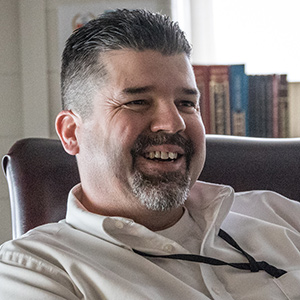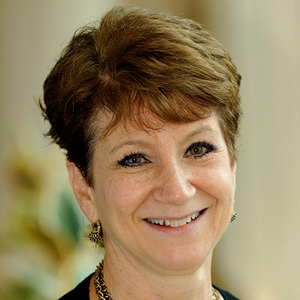The NIEHS-funded documentary “Waking Up to Wildfires,” commissioned by the University of California, Davis Environmental Health Sciences Center (EHSC), was nominated May 6 for a regional Emmy award.
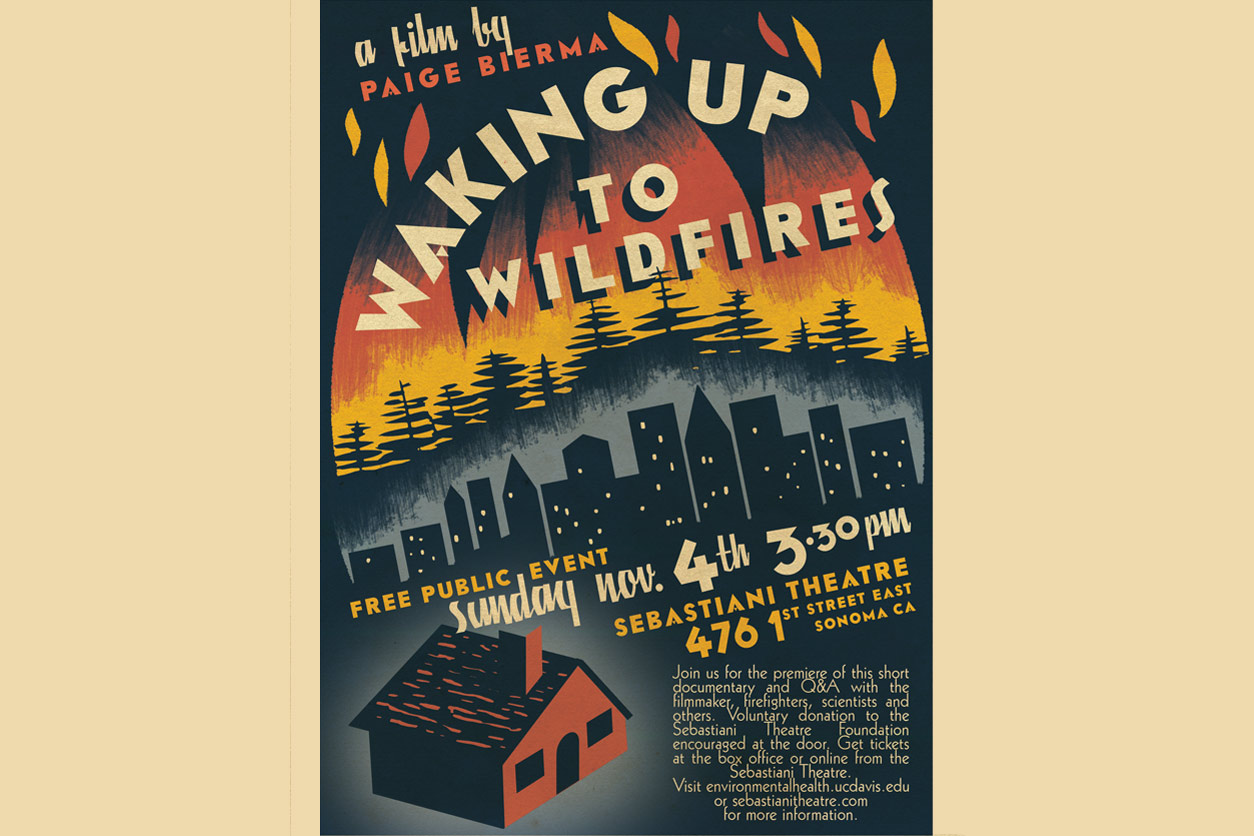 This flyer announced the 2018 world premiere of the documentary. (Photo courtesy of Chris Wilkinson)
This flyer announced the 2018 world premiere of the documentary. (Photo courtesy of Chris Wilkinson)The film, made by the center’s science writer and video producer Jennifer Biddle and filmmaker Paige Bierma, shows survivors, first responders, researchers, and others grappling with the aftermath of the 2017 Northern California wildfires. The most significant of them, the Tubbs Fire, was at the time the most destructive wildfire event in California history, destroying more than 5,600 structures, many of which were homes.
“We were able to capture the first big, climate-related wildfire event in California’s history because we had direct support from EHSC and NIEHS,” said Biddle. “Without quick access to funding, we would have had to raise money in other ways. That would have taken longer so our documentary would not have been able to tell the stories in the same way, because survivors would have been at a completely different point in their recovery.”
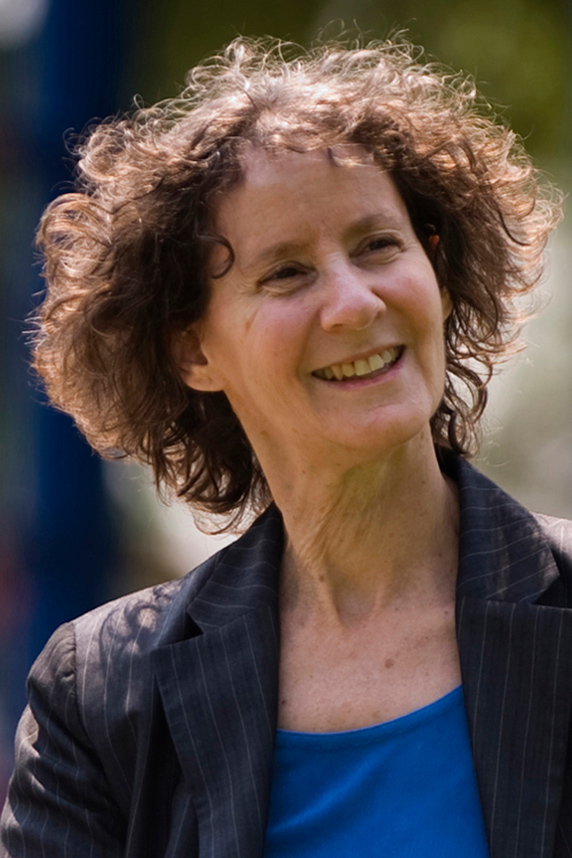 Hertz-Picciotto leads the NIEHS-funded project Wildfires and Health: Assessing the Toll on Northern California (WHAT NOW California). (Photo courtesy of Jose Luis Villegas)
Hertz-Picciotto leads the NIEHS-funded project Wildfires and Health: Assessing the Toll on Northern California (WHAT NOW California). (Photo courtesy of Jose Luis Villegas)Scientific studies launched quickly
The documentary also portrays scientists as they launch exposure studies of how populations were affected by burning homes. Although results are not yet published, EHSC director Irva Hertz-Picciotto, Ph.D., said that overall, respiratory symptoms were strikingly high during the fires and in the weeks following. “We found some subgroups that were particularly hard hit, and there was a high level of mental stress,” she said.
Hertz-Picciotto discussed the research in more depth in a March 2020 podcast from the NIEHS Partnerships for Environmental Public Health (PEPH; see sidebar). The research team surveyed nearly 6,000 residents about the respiratory and mental health issues they experienced during and in the immediate aftermath of the fires. Their research expanded in 2018 in the aftermath of the Camp fire, which destroyed the town of Paradise.
Widely viewed, put to use
Since the film’s premiere in late 2018, it has been picked up in nearly a third of public television markets across the U.S., according to Biddle. “PBS [Public Broadcasting System] is syndicating the film through 2021, so we expect many more people to see it,” she said.
Biddle said that response to the documentary has been extremely positive, and its raw, emotional stories and sense of community are part of the draw. “We aimed to show how wildfires affected everyone — the similarities of losing it all so suddenly and the differences when it came to things like money, race, and age,” she explained. “It also was important to show that even when there was unthinkable loss and the most dire circumstances, there was resilience, too.”
 Biddle said she and Bierma travelled 2,000 miles over six months to capture the aftermath of the fire. (Photo courtesy of Jennifer Biddle)
Biddle said she and Bierma travelled 2,000 miles over six months to capture the aftermath of the fire. (Photo courtesy of Jennifer Biddle)In its 19 months of circulation, the film has been featured in a wildfire workshop by the National Academies of Science, Engineering, and Medicine, and the California Department of Forestry and Fire Protection (Cal Fire) used it in a suicide prevention program for first responders.
“Jason Novak, the firefighter who talked about PTSD in our film, has become a leader in Cal Fire, helping other first responders cope with the life and death decisions they make in the field,” Biddle shared. “As we’re seeing now with COVID-19 and frontline healthcare workers, wildland firefighters are like combat veterans rescuing people from these disasters. As a society, it’s critical we learn from these crises so we can protect those we expect to be there for us. We truly are all in this together.”





